Are you a nature lover looking to escape the crowds and discover something truly magical in 2025?
India is home to countless waterfalls, but beyond the famous ones lies a world of hidden gems—untouched, serene, and breathtakingly beautiful. These 20 hidden waterfalls in India are nature’s best-kept secrets, tucked away in remote corners of forests, mountains, and valleys.
Whether you’re an adventure seeker or a peace-loving traveler, this list will guide you to waterfalls that promise not just scenic beauty but an unforgettable experience. From the lush hills of the Western Ghats to the misty mountains of the Northeast, let’s uncover these natural treasures waiting to be explored in 2025!
List of Waterfalls
1.Anayadikuth Waterfall, Kerala

Tucked away in the lush greenery of Idukki district, Anayadikuth Waterfall is one of the most stunning yet lesser-known waterfalls in Kerala. Surrounded by dense forest and spice plantations, this hidden waterfall in India offers a tranquil retreat far from the typical tourist trails. The water gently cascades down rocky terrain, creating a scenic view that feels untouched by modern chaos.
📍 How to Reach:
Located near Thodupuzha in Idukki, it’s about 20 km from Thommankuthu. Nearest railway station is Ernakulam (85 km away). From there, local taxis or buses are available.
🕒 Best Time to Visit:
June to September (monsoon) for full water flow and natural beauty.
💡 Travel Tip:
Visit early in the morning to enjoy the waterfall in solitude. Carry water and snacks, as facilities are minimal.
2.Chachai Falls, Rewa
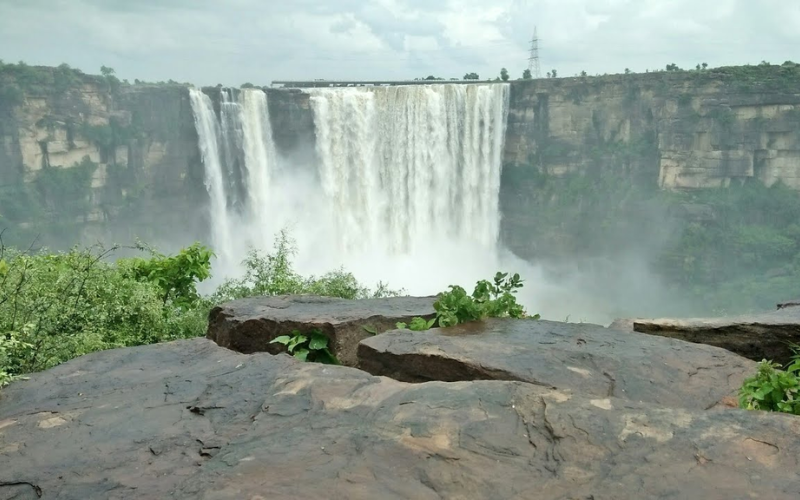
Located in the serene surroundings of Rewa district, Chachai Falls is one of the most hidden waterfalls in India that still remains off the radar for mainstream tourists. Falling from a height of about 130 meters, this majestic cascade is formed by the Bihad River, a tributary of the Tamsa River. The fall originates from the Rewa Plateau and offers stunning views of rocky cliffs and forested valleys — a perfect site for nature photography and solitude.
📍 How to Reach:
Chachai Falls is about 46 km from Rewa city. The nearest railway station is Rewa, and local taxis or buses can take you to the falls.
🕒 Best Time to Visit:
July to October, when the monsoon breathes life into the river and surrounding greenery.
💡 Travel Tip:
Wear sturdy shoes, as the terrain can be slippery. Ideal for quiet nature walks and scenic views.
3.Kune Waterfall, Maharashtra
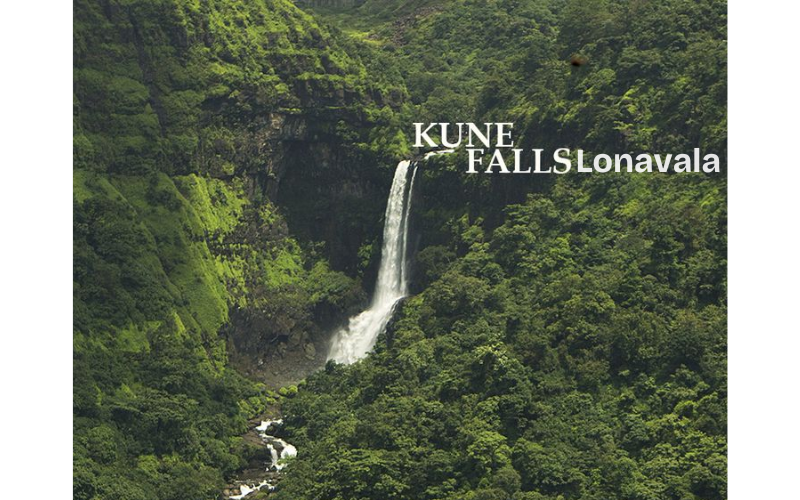
Nestled amidst the misty Sahyadri hills near Lonavala, Kune Waterfall is a spectacular yet surprisingly less explored waterfall in India. With a height of approximately 200 meters, this three-tiered cascade is one of the tallest in Maharashtra. Surrounded by lush greenery and cliffs, it offers a perfect setting for monsoon getaways and nature photography. Despite being close to a popular hill station, Kune remains relatively hidden and peaceful.
📍 How to Reach:
Kune Waterfall is located between Lonavala and Khandala, about 3 km from the Lonavala railway station. It’s easily accessible by local cabs or autos.
🕒 Best Time to Visit:
June to September during the monsoon, when the fall is at its full glory and the surroundings are covered in lush green.
💡 Travel Tip:
A permit may be required as the falls lie on private property. Best visited in early hours to avoid weekend crowds.
4.Labon Falls, Meghalaya

Tucked deep within the untouched landscapes of the East Khasi Hills, Labon Falls is one of the most mesmerizing yet secret waterfalls in India. Located near the peaceful village of Pynursla, this hidden cascade flows gracefully through dense forests, offering panoramic views of the green valley and nearby Bangladesh plains. Unlike the more commercial waterfalls in Meghalaya, Labon remains undisturbed, making it ideal for offbeat explorers and solitude seekers.
📍 How to Reach:
Labon Falls is around 80 km from Shillong and 5 km from Pynursla village. Nearest airport is in Shillong; taxis and local guides are available to reach the spot via forest trails.
🕒 Best Time to Visit:
August to November, when the monsoon has enriched the landscape but the skies remain clearer.
💡 Travel Tip:
Travel with a local guide as the path is unmarked. Carry rain gear and hiking shoes for a safe visit.
5.Padajhar Falls, Rajasthan

Rajasthan may be famous for its deserts, but Padajhar Falls in Rawatbhata (Chittorgarh district) offers a surprising escape into lush greenery and cool flowing water. As one of the most hidden waterfalls in India, Padajhar is a seasonal gem tucked amidst the Aravalli hills. Surrounded by forested terrain, the fall cascades into a natural pool, making it a scenic retreat for monsoon explorers and photographers.
📍 How to Reach:
Padajhar Falls is located about 15 km from Rawatbhata town and 110 km from Kota. The nearest railway station is Kota Junction. Local taxis are available for last-mile travel.
🕒 Best Time to Visit:
July to September during the monsoon, when the waterfall is in full flow and the surrounding landscape turns green.
💡 Travel Tip:
Avoid weekends for a peaceful experience. Wear proper shoes as the path can be rocky and slippery post-rain.
6.Keoti Falls, Madhya Pradesh
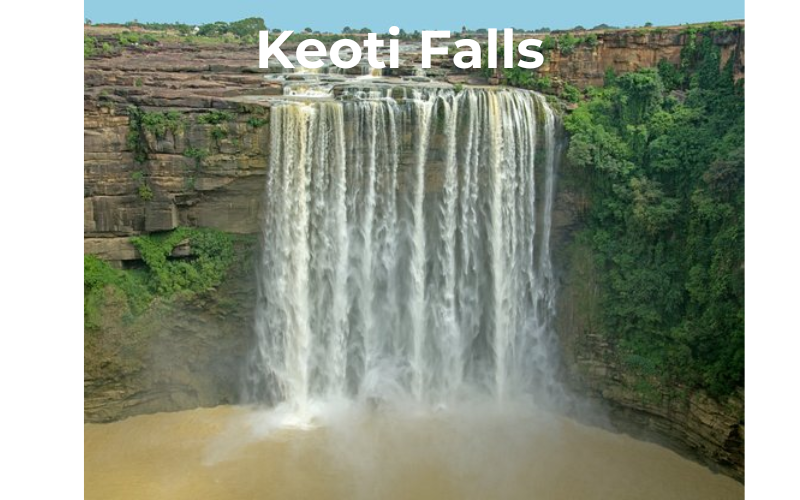
Located in the Rewa district of Madhya Pradesh, Keoti Falls is one of the highest and most stunning yet hidden waterfalls in India. Falling from a height of around 130 meters, it is formed by the Mahana River, a tributary of the Tamsa. The powerful stream plunges down a vertical cliff, creating a thunderous roar and misty aura that captivates nature lovers and photographers alike. Despite its size, Keoti remains uncrowded and peaceful.
📍 How to Reach:
Keoti Falls is approximately 46 km from Rewa city. The nearest railway station is Rewa, and local transport is available from the city to the falls.
🕒 Best Time to Visit:
August to October, when the monsoon enhances its beauty and the surroundings turn lush green.
💡 Travel Tip:
The viewpoint offers stunning photo opportunities. Avoid going too close to the edge as the rocks can be slippery and steep.
7.Lakemist Falls, Dehradun
Just a few kilometers before reaching Mussoorie from Dehradun, lies the lesser-known yet breathtaking Lakemist Falls. Surrounded by pine forests and rolling hills, this waterfall is a peaceful escape from the bustling crowds of popular hill stations. A true hidden waterfall in India, Lakemist is best known for its soft mist, cool breeze, and tranquil ambiance that soothes both mind and soul. It’s perfect for nature lovers, couples, and anyone seeking solitude amidst scenic beauty.
📍 How to Reach:
Located on the Mussoorie-Dehradun road (about 6 km before Mussoorie), Lakemist Falls is easily accessible by taxi or private car from Dehradun (34 km away).
🕒 Best Time to Visit:
July to September, during the monsoon season, when the waterfall flows in full glory.
💡 Travel Tip:
Visit early morning or late afternoon for magical light and fewer tourists. Carry water and wear non-slippery shoes for a safe walk.
8.Weinia Falls, Meghalaya
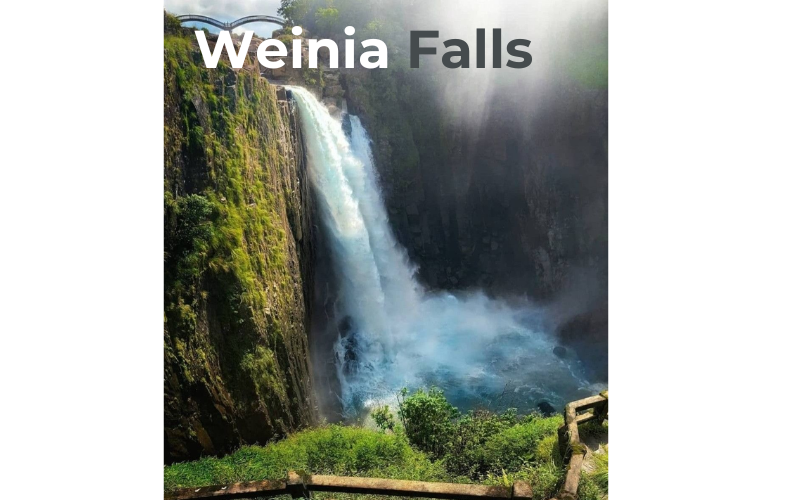
Nestled in the tranquil Garo Hills of Meghalaya, Weinia Falls is a spectacular yet offbeat waterfall in India that remains untouched by mass tourism. Plunging from a height of around 100 meters into a deep gorge surrounded by dramatic cliffs and dense forest, the fall offers an awe-inspiring view. Its natural beauty is complemented by the roaring sound of water and misty air — a perfect setting for nature lovers and adventure seekers.
📍 How to Reach:
Weinia Falls is located about 14 km from Nongkhnum Island in the West Khasi Hills. The nearest airport is in Shillong (around 150 km). Local taxis or private vehicles are the best options for reaching the site.
🕒 Best Time to Visit:
September to November, when the flow is strong but the weather remains pleasant for travel.
💡 Travel Tip:
Combine your trip with a visit to Nongkhnum Island for a complete offbeat Meghalaya experience.
9.Neer Falls, Rishikesh

Just a few kilometers away from the spiritual hub of Rishikesh lies the serene and relatively hidden waterfalls in india, also known as Neer Falls. Cascading down through lush green hills and forming natural pools, this multi-tiered fall is a favorite among trekkers and nature enthusiasts. Surrounded by Himalayan forests and chirping birds, it offers a peaceful alternative to the city’s spiritual rush.
📍 How to Reach:
Located about 5 km from Laxman Jhula in Rishikesh. You can reach the base by vehicle and then hike for around 1 km to reach the main falls.
🕒 Best Time to Visit:
October to March for pleasant weather, or July to September to witness the waterfall in full flow.
💡 Travel Tip:
Carry water and wear trekking shoes. There’s a small entry fee, and early morning visits offer the best light and fewer crowds.
10.Patna Waterfall, Rishikesh

Hidden along the famous Neelkanth Mahadev trek route, Patna Waterfall is one of Rishikesh’s most underrated and peaceful waterfalls. Surrounded by limestone cliffs and dense Sal forest, this natural gem offers a serene environment perfect for meditation, short hikes, and photography. The name “Patna” is derived from a nearby village, and not to be confused with the city of Patna. Though smaller in height, the fall creates multiple gentle streams that form natural pools at its base.
📍 How to Reach:
Situated around 12 km from Rishikesh on the Neelkanth Road. A short 1.5 km uphill trek from the roadside leads you to the falls. Local taxis are easily available.
🕒 Best Time to Visit:
July to September for maximum water flow; October to February for easier trekking conditions.
💡 Travel Tip:
Wear sturdy shoes for the uphill walk and carry water. Early morning visits offer peaceful vibes and better light.
11.Rakimkund Falls, Bihar
Tucked away in the hills of Nalanda district, Rakimkund Falls is one of the most underrated waterfalls in Bihar. Surrounded by rocky cliffs and dense greenery, this seasonal waterfall offers a peaceful retreat for those looking to explore Bihar beyond its historical sites. During the monsoon, the water gushes down into a clear natural pool, attracting local trekkers, photographers, and offbeat explorers. Despite its beauty, Rakimkund remains untouched by commercial tourism, adding to its raw charm.
📍 How to Reach:
Rakimkund Falls is located near Rajgir in Nalanda district. The nearest railway station is Rajgir (about 15 km away). From there, you can hire a local auto or taxi. A short trek is required to reach the falls.
🕒 Best Time to Visit:
July to September, especially during or after monsoon rains when the waterfall is at its best.
💡 Travel Tip:
Carry snacks and water, as there are no shops nearby. Early visits ensure fewer people and better views.
12.Talakona Falls, Andhra Pradesh
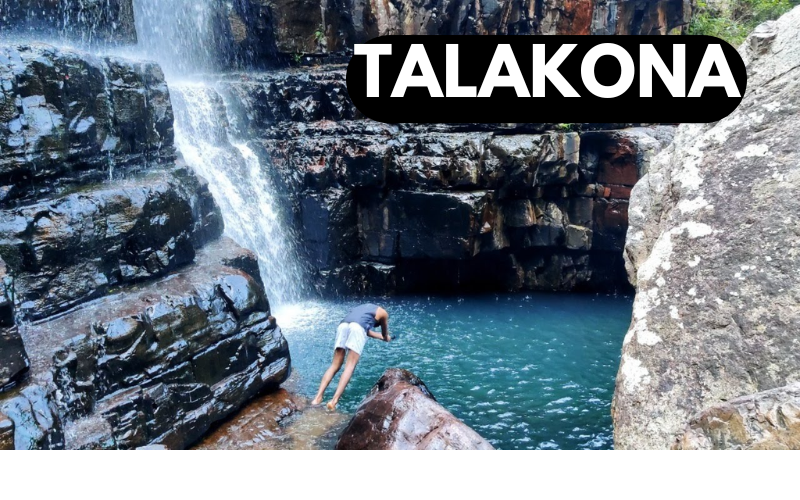
Located inside Sri Venkateswara National Park, Talakona Falls (Wikipedia) is the tallest waterfall in Andhra Pradesh, cascading from a height of about 270 feet. This hidden gem in South India is not only a nature lover’s paradise but also holds spiritual significance due to a nearby Lord Shiva temple. Surrounded by dense forest, medicinal plants, and trekking trails, Talakona offers a rejuvenating escape for eco-tourists, wildlife enthusiasts, and families alike.
📍 How to Reach:
Talakona Falls is located about 50 km from Tirupati. The nearest railway station and airport are in Tirupati. From there, you can hire a cab or take a bus to reach the falls.
🕒 Best Time to Visit:
August to January, especially after the monsoon when the waterfall is in full flow and the forest is lush.
💡 Travel Tip:
Explore the short jungle trek around the falls and carry mosquito repellent for a comfortable visit.
13.Bhimlat Waterfall, Rajasthan
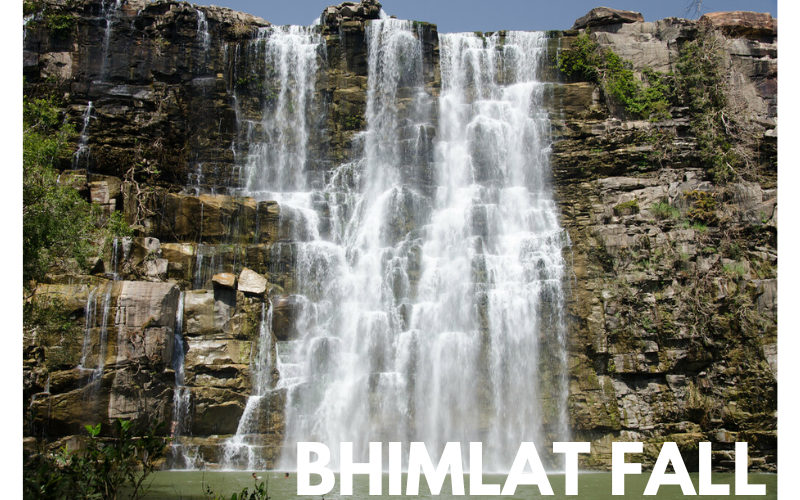
Amidst the dry landscape of Rajasthan lies the stunning Bhimlat Waterfall, a rare and refreshing surprise near Bundi. Cascading from a height of around 60 meters into a deep, green pool, this waterfall is surrounded by rocky cliffs and ancient temples, offering both natural beauty and historical intrigue. According to legend, it was created by Bhim (of Mahabharata) to quench Draupadi’s thirst, making it a site of mythological importance as well.
📍 How to Reach:
Located about 35 km from Bundi and 70 km from Kota. The nearest railway station is in Bundi. From there, local taxis or private vehicles are the best way to reach the waterfall.
🕒 Best Time to Visit:
July to September during the monsoon, when the waterfall is at its full strength and the surroundings turn green.
💡 Travel Tip:
Combine your visit with a tour of Bundi’s stepwells and palaces for a heritage-filled weekend escape.
14.Nuranang Falls, Arunachal Pradesh
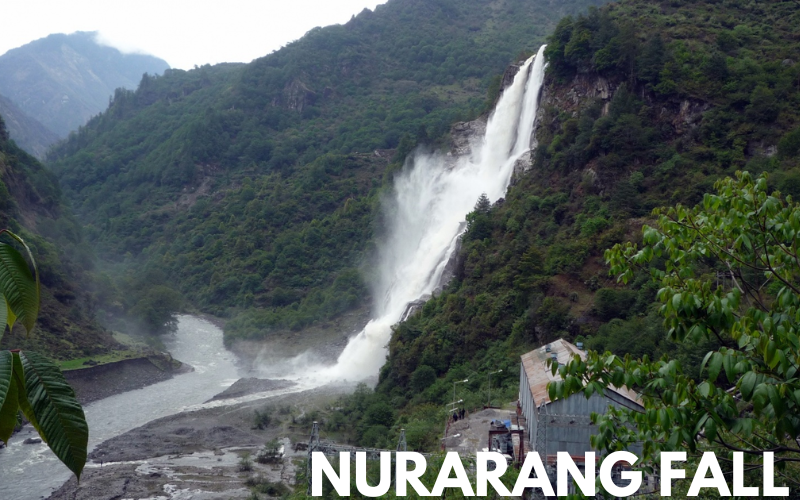
Also known as Jang Falls, Nuranang Falls is one of the most breathtaking and relatively unexplored waterfalls in Arunachal Pradesh. Located near Tawang, it plunges from a height of about 100 meters, creating a mesmerizing scene amidst pine forests and misty hills. The fall originates from the Nuranang River, which is believed to be named after a local Monpa girl who helped an Indian soldier during the 1962 war — adding emotional depth to its natural charm.
📍 How to Reach:
Nuranang Falls is located about 40 km from Tawang. The nearest airport is in Tezpur (Assam), and from there, a long road journey via Bomdila leads to Tawang. Local taxis from Tawang can take you to the falls.
🕒 Best Time to Visit:
April to October, when the weather is clear and roads are accessible.
💡 Travel Tip:
Don’t miss the nearby small hydel power station and the chance to photograph the fall during golden hour.
15.Langshiang Falls, Meghalaya
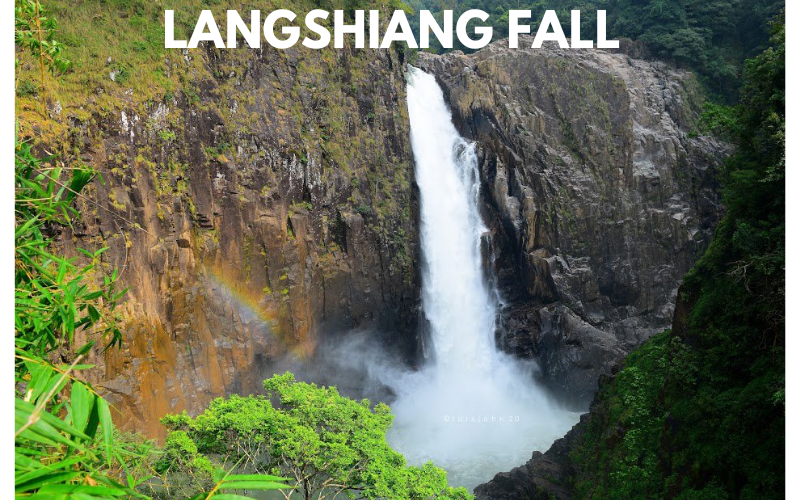
Langshiang Falls is one of the most majestic yet hidden waterfalls in India, nestled near the quiet village of Sangriang in the West Khasi Hills of Meghalaya. Plunging from approximately 337 meters, it’s among the tallest waterfalls in India. Surrounded by thick forests and rugged terrain, this offbeat gem is perfect for nature lovers and serious trekkers looking to escape the tourist crowd. The fall is part of the Kynshi River and forms a dramatic cascade that is often shrouded in mist.
📍 How to Reach:
Located about 105 km from Shillong. First, reach Nongstoin by road, then take a short drive and trek from Sangriang village to reach the falls. Local guides are recommended.
🕒 Best Time to Visit:
June to October, when the monsoon enhances its full flow and beauty.
💡 Travel Tip:
Pack light, wear trekking shoes, and carry essentials — the area is remote and untouched by commercial tourism.
16.Hebbe Falls, Karnataka
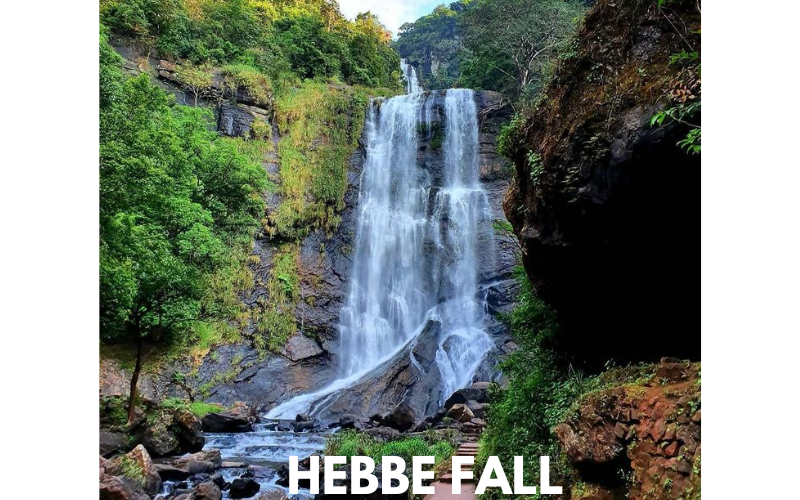
Tucked deep inside the Bhadra Wildlife Sanctuary near Kemmanagundi, Hebbe Falls is one of the most beautiful and hidden waterfalls in India. Cascading in two stages – Dodda Hebbe (Big Falls) and Chikka Hebbe (Small Falls) – this stunning waterfall drops from a height of around 550 feet. Surrounded by lush coffee plantations, misty hills, and dense forest, it’s a favorite among trekkers, nature lovers, and those searching for offbeat travel spots in Karnataka.
📍 How to Reach:
Located about 280 km from Bengaluru and 65 km from Chikmagalur. You can reach Kemmanagundi by road, and from there, hire a jeep or trek 8 km through forest paths to reach the falls.
🕒 Best Time to Visit:
July to January, especially post-monsoon, when the fall is in full glory.
💡 Travel Tip:
Leeches are common during the rainy season, so wear protective clothing and carry salt or repellents.
17.Vantawng Falls, Mizoram
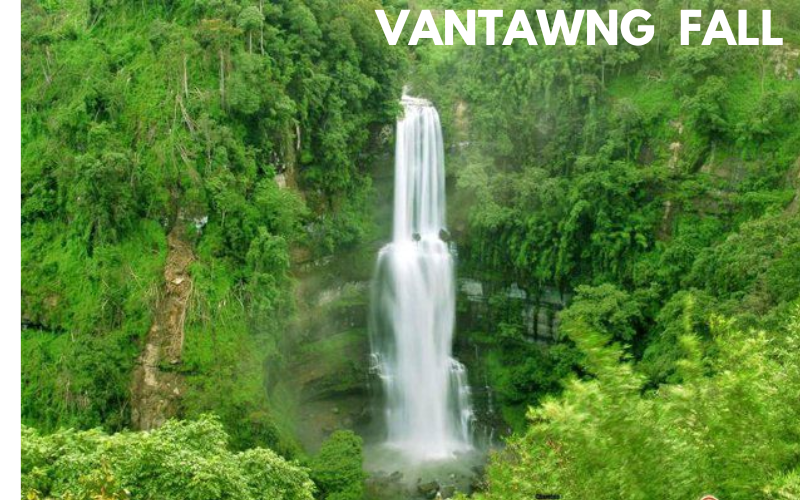
Tucked away in the lush green hills of Serchhip district, Vantawng Falls is one of the most hidden waterfalls in India, and the highest in Mizoram. Falling from a height of 750 feet (229 meters), it appears like a white ribbon slicing through the dense forest. Surrounded by bamboo groves and untouched wilderness, this waterfall is a serene escape for those exploring the offbeat beauty of Northeast India. It’s named after Vantawnga, a legendary swimmer believed to have swum in its swirling base.
📍 How to Reach:
Located around 137 km from Aizawl, the capital of Mizoram. You can hire a taxi or take a bus to Thenzawl, the nearest town, and travel 5 km further to reach the viewpoint.
🕒 Best Time to Visit:
September to January, when the monsoon-fed falls are in full flow and the forest is vibrant.
💡 Travel Tip:
The waterfall is best viewed from a designated platform—trekking close to the base is not advised due to steep terrain.
18.Chympe Falls, Meghalaya

Located deep within the Jaintia Hills, Chympe Falls is one of the least explored and most spectacular hidden waterfalls in India. The water flows through dense forests, limestone cliffs, and mysterious caves, making the journey as thrilling as the destination. With crystal-clear blue waters and natural rock pools below, it’s a perfect retreat for adventure seekers and solitude lovers.
📍 How to Reach:
The falls are situated near the village of Khaddum in Meghalaya’s Jaintia Hills. The nearest major town is Jowai, about 60 km away. From there, local guides are recommended to trek through forest trails and hidden cave paths to reach the falls.
🕒 Best Time to Visit:
October to April, when the weather is dry, and forest paths are easier to navigate.
💡 Travel Tip:
Carry good trekking shoes and basic supplies — the area is remote, with no commercial facilities around.
19.Kumbhe Falls, Maharashtra
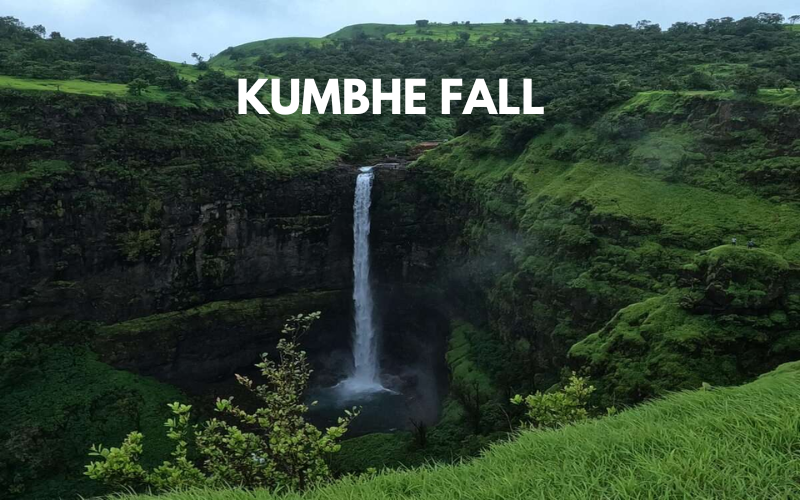
Tucked away in the lush greenery of Sindhudurg district, Kumbhe Falls is one of the lesser-known hidden waterfalls in India, offering untouched natural beauty in the heart of the Western Ghats. Cascading from a modest height, this charming waterfall forms natural pools ideal for a refreshing dip. Surrounded by dense forests, chirping birds, and the tranquil sounds of water, Kumbhe is perfect for those seeking solitude and scenic beauty away from crowded tourist spots.
📍 How to Reach:
Located near the village of Kumbhe in Maharashtra, it’s around 25 km from Sawantwadi and 100 km from Goa. The best way to reach is by road via local taxis or private vehicles, followed by a short nature walk.
🕒 Best Time to Visit:
July to September during the monsoon, when the fall is in full flow and the surrounding greenery is at its peak.
💡 Travel Tip:
Pack light, carry waterproof gear, and keep your camera ready — the place is a hidden paradise
20.Thalaiyar Falls, Maharashtra
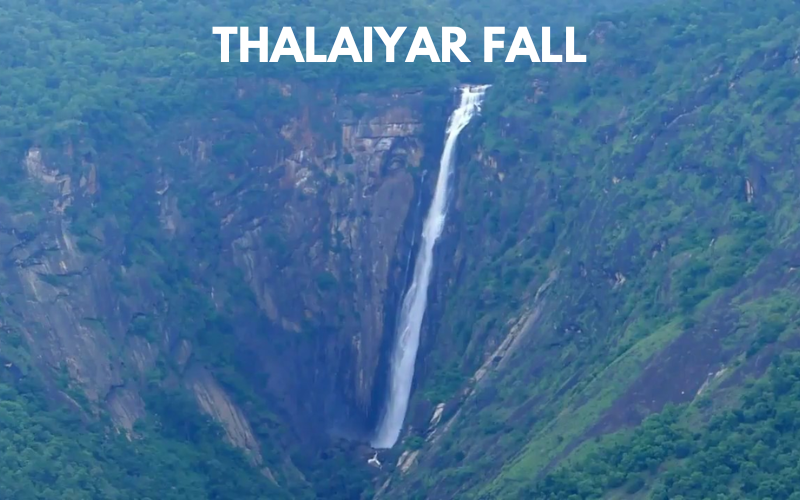
Hidden deep within the Palani Hills near Dindigul, Thalaiyar Falls — also known as Rat Tail Falls — is one of the tallest and most awe-inspiring hidden waterfalls in India, plunging from a staggering height of 975 feet (297 meters). Its remote location and lack of direct access keep it off the mainstream tourist radar, making it a dream spot for adventure seekers and offbeat explorers.
📍 How to Reach:
You can view the falls from the Dum Dum Rock viewpoint on the Kodai Ghat Road, about 40 km from Kodaikanal. To reach the base, a challenging trek from Manjalar Dam is required, recommended only with an experienced local guide.
🕒 Best Time to Visit:
October to February, when the flow is steady, and skies are clear for a distant view.
💡 Travel Tip:
It’s best admired from a distance — the terrain is wild and unexplored. Carry binoculars for better views.
ALSO READ: 20 Hidden Places, 15 Offbeat Places and 10 Forests in India
Conclusion: Discover the Hidden Cascades of India
India’s vast and diverse landscapes are home to countless natural wonders, but these 20 hidden waterfalls in India are truly nature’s secret gems. Far from the touristy crowds and nestled deep within forests, hills, and valleys, each waterfall offers a unique blend of serenity, adventure, and scenic beauty.
Whether you’re a seasoned traveler, a nature lover, or someone looking to explore offbeat destinations in 2025, these hidden waterfalls promise unforgettable experiences. So pack your bags, lace up your hiking boots, and get ready to chase these breathtaking cascades.
✨ Which of these hidden gems will you explore first? Let us know in the comments below!
📌 Don’t forget to bookmark this guide and share it with fellow travel enthusiasts.

4 thoughts on ““20 Hidden Waterfalls in India You Must Explore in 2025 – Nature’s Untouched Treasures””
Comments are closed.